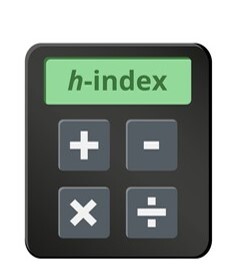Where can I get a research paper published?


Publishing your research in a good journal is important. It helps you share your work, advance your career, and make a difference in your field. Choosing the right place to publish is key. There are a few big databases that index journals, like Scopus, PubMed, and Web of Science.
These databases are like giant libraries for research papers. They have lots of high-quality journals from different areas of study. Publishing in a journal listed in one of these databases means more people will see your work and it will be taken seriously. Each database has its own focus. You need to figure out which one is best for your research.
When selecting a database to publish your research paper, consider the following factors:
Scope and focus: Identify the database that best aligns with the subject matter and discipline of your research. For example, PubMed is particularly well-suited for publications in the biomedical and life sciences, while Scopus and Web of Science cover a broader range of academic fields. Scopus, for instance, boasts a vast collection of journals in engineering, social sciences, and humanities, while Web of Science excels in the sciences and arts & humanities.
Reputation and impact: Look for journals indexed in these databases that have a strong reputation and high impact metrics, such as the impact factor, CiteScore, or h-index. These metrics can provide valuable insights into the journal's quality, rigor, and influence within the research community. A journal with a high impact factor generally indicates that its published articles are frequently cited by other researchers in the field, suggesting a greater influence and recognition.
Accessibility and readership: Consider the database's reach and accessibility to your target audience. Some databases may have wider visibility or a more specialized readership that aligns with your research goals. For instance, if your research focuses on a specific niche within a broader field, you might consider a journal indexed in a database that caters to that specific area, ensuring your work reaches the most relevant audience.
When selecting a journal for publication, it's important to thoroughly evaluate the journal's metrics and reputation. Some key factors to consider include:

Impact factor: The impact factor is a widely used metric that reflects the average number of citations received by articles published in a particular journal. It can provide insights into the journal's influence and prestige within the scientific community. A higher impact factor generally indicates a greater influence and recognition within the field.

CiteScore: CiteScore is a metric that measures the average number of citations received by documents published in a journal during the previous three-year period. It can be a useful complement to the impact factor, providing a more recent view of the journal's impact.

h-index: The h-index is a measure of a journal's productivity and impact, based on the number of highly cited articles it has published. It can be a valuable indicator of a journal's overall quality and standing. A higher h-index suggests that the journal has published a significant number of articles that have been widely cited and considered influential in the field.
Before submitting your research paper to a journal, make sure it adheres to the journal's author guidelines. This typically includes formatting requirements, such as the structure of the manuscript, citation style, and any specific formatting for figures, tables, or supplementary materials. Carefully following these guidelines ensures that your paper meets the journal's standards and increases the likelihood of it being accepted for review.
Once you have prepared your paper according to the guidelines, you will need to wait for the journal's editorial team to make a decision regarding the acceptance or rejection of your submission. In some cases, the journal may request revisions to your paper before making a final decision. This is a common practice and should not be seen as a failure, but rather as an opportunity to improve your work and increase its chances of acceptance. It's important to be prepared for this possibility and to be open to feedback from the reviewers.

Remember: Publishing in high-quality, reputable journals is a crucial step in disseminating your research and advancing your academic or professional career. By carefully selecting the appropriate database and journal, and preparing your paper according to the guidelines, you can increase the likelihood of having your work accepted and published.
Ready to take your research to the next level and publish in a top-tier journal? SITA can help you navigate the complexities of formatting and submission, ensuring your paper meets the highest standards for publication. From perfecting your manuscript's structure and citations to mastering the submission process, we're here to guide you every step of the way.
If you have any questions, inquiries, or would like to learn more about our services, please don't hesitate to reach out to us. Our dedicated team is ready to assist you.